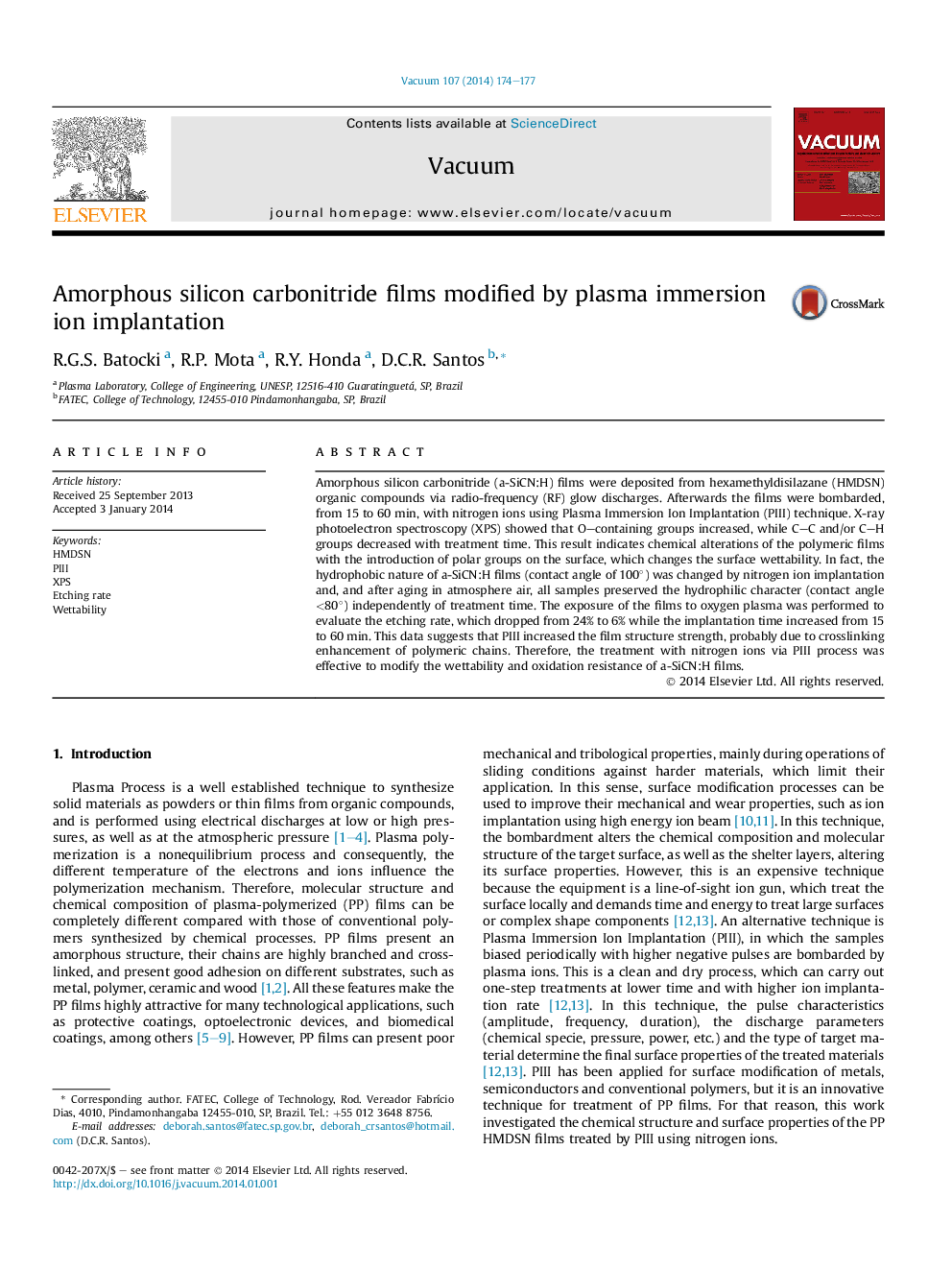| Article ID | Journal | Published Year | Pages | File Type |
|---|---|---|---|---|
| 1690020 | Vacuum | 2014 | 4 Pages |
Abstract
Amorphous silicon carbonitride (a-SiCN:H) films were deposited from hexamethyldisilazane (HMDSN) organic compounds via radio-frequency (RF) glow discharges. Afterwards the films were bombarded, from 15 to 60 min, with nitrogen ions using Plasma Immersion Ion Implantation (PIII) technique. X-ray photoelectron spectroscopy (XPS) showed that O-containing groups increased, while C-C and/or C-H groups decreased with treatment time. This result indicates chemical alterations of the polymeric films with the introduction of polar groups on the surface, which changes the surface wettability. In fact, the hydrophobic nature of a-SiCN:H films (contact angle of 100°) was changed by nitrogen ion implantation and, and after aging in atmosphere air, all samples preserved the hydrophilic character (contact angle <80°) independently of treatment time. The exposure of the films to oxygen plasma was performed to evaluate the etching rate, which dropped from 24% to 6% while the implantation time increased from 15 to 60 min. This data suggests that PIII increased the film structure strength, probably due to crosslinking enhancement of polymeric chains. Therefore, the treatment with nitrogen ions via PIII process was effective to modify the wettability and oxidation resistance of a-SiCN:H films.
Keywords
Related Topics
Physical Sciences and Engineering
Materials Science
Surfaces, Coatings and Films
Authors
R.G.S. Batocki, R.P. Mota, R.Y. Honda, D.C.R. Santos,
